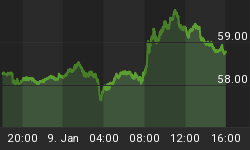Among the several economic reports due for publication this week -- new home sales, existing home sales, consumer confidence measures, durable goods orders, preliminary estimate of fourth quarter real GDP, and ISM manufacturing survey results for February, construction outlays for January, and the personal income and outlays report for January-- the Fed's preferred inflation measure will garner a great deal of attention. The core personal consumption expenditure (PCE) price index, which excludes food and energy, advanced 2.22% in December, representing a deceleration from the 2.44% peak seen in August. This improvement is important because core inflation is heading in the direction of the FOMC's comfort zone of 1%-2%. However, after the January Consumer Price Index (CPI) was reported, there were concerns about the January core PCE price index because it is largely based on the CPI.
The main reason for the anxiety is the fact that the sharp 0.8% increase in medical care prices was responsible for 60% of the increase in the core CPI. Although the PCE price is based on the CPI but there are several differences in terms of scope and weights of components. Medical care expenses (weight was 17.1% in 2006) in the PCE price index are roughly three times the weight of medical care in CPI (weight is 6.28% in 2007 ). The inputs used for the medical care component of the PCE price index are broader in scope compared with the medical care price index in the CPI and part of the medical care price information is obtained from the Producer Price Index. Historically, the year-to-year change in the two price indexes show a strong positive correlation (see chart 1)
Chart 1
However, in recent years, the two price indexes have diverged and their movement is not as close as seen previously.
Chart 2
Therefore, it is not clear, if the core PCE index of January (scheduled to be published on March 1) will show a large increase as implied by the core CPI. Chart 2 shows that medical care prices are advancing at a faster pace in the CPI compared with the PCE.















